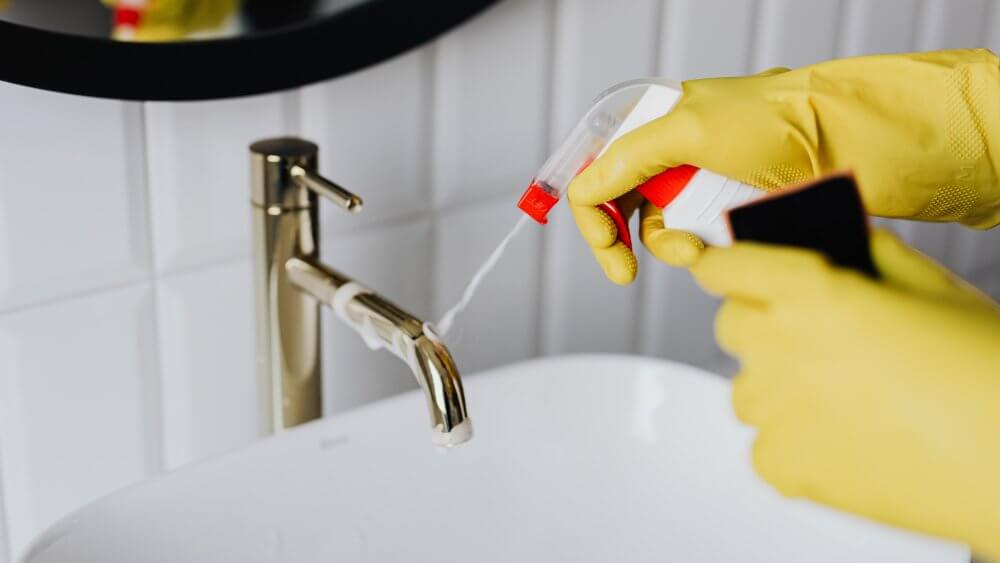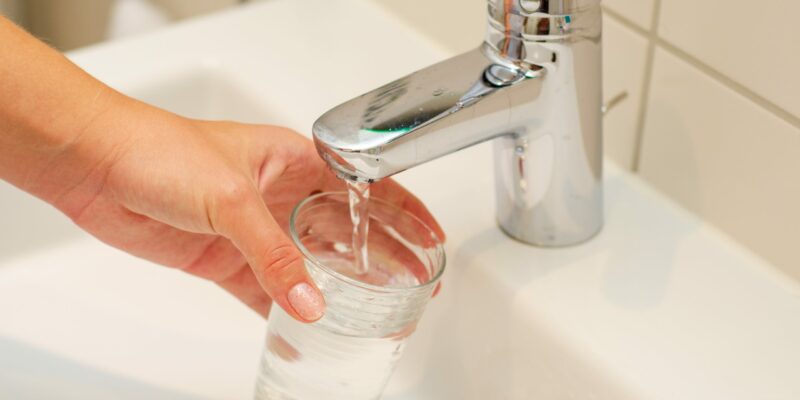The Importance of Disinfectants in Public Spaces
- Breaking the Chain of Transmission: Public spaces can be breeding grounds for various pathogens due to the constant flow of people. Disinfectants help break the chain of transmission by minimizing these microorganisms from frequently touched surfaces, reducing the risk of contamination and subsequent infection.
- High-Touch Surfaces Demand Attention: Door handles, elevator buttons, and communal areas are hotspots for the transfer of germs. Regular disinfection of these areas is crucial to maintaining a hygienic environment.
- Protecting Vulnerable Populations: Older people and those with compromised immune systems are at a higher risk of severe outcomes from infectious diseases. Diligent disinfection in public spaces helps create safer environments for everyone, especially those who may be more susceptible to illness.
Key Places Where Disinfectants Are Used
 Apartments/Hotels: Apartments and hotels house many people in close proximity and contain communal areas like lobbies and pools. To reduce the transmission of infectious diseases and to contribute to a clean and safe environment for guests and residents, disinfectants are used to help control pathogens in these shared spaces.
Apartments/Hotels: Apartments and hotels house many people in close proximity and contain communal areas like lobbies and pools. To reduce the transmission of infectious diseases and to contribute to a clean and safe environment for guests and residents, disinfectants are used to help control pathogens in these shared spaces.
 Hospitals/Healthcare: Healthcare facilities often have various places requiring different levels of disinfection, including examination rooms, surgery bays, ICUs, pharmacies, waiting rooms, and more. Disinfectants are used to manage the spread of disease-causing microbes, helping to protect doctors, patients, staff, and other visitors from becoming unnecessarily ill.
Hospitals/Healthcare: Healthcare facilities often have various places requiring different levels of disinfection, including examination rooms, surgery bays, ICUs, pharmacies, waiting rooms, and more. Disinfectants are used to manage the spread of disease-causing microbes, helping to protect doctors, patients, staff, and other visitors from becoming unnecessarily ill.
 Gyms: Due to the high level of physical activity and shared equipment, public gyms can contain numerous places and surfaces where germs can live, like weights, exercise equipment, cardio machines, and locker rooms. Disinfectants can help reduce and kill these germs, minimizing the spread of disease and helping keep gym members healthy.
Gyms: Due to the high level of physical activity and shared equipment, public gyms can contain numerous places and surfaces where germs can live, like weights, exercise equipment, cardio machines, and locker rooms. Disinfectants can help reduce and kill these germs, minimizing the spread of disease and helping keep gym members healthy.
 Public Transportation: Public transportation systems, such as subways, airplanes, and buses, are places where many people pass through in close contact every day and have many surfaces where germs can be easily transmitted. The regular use and application of disinfectant products can help reduce the number of germs and stop them from spreading.
Public Transportation: Public transportation systems, such as subways, airplanes, and buses, are places where many people pass through in close contact every day and have many surfaces where germs can be easily transmitted. The regular use and application of disinfectant products can help reduce the number of germs and stop them from spreading.
 Schools: Schools host many students, staff, and parents every day and have numerous surfaces where germs can live like countertops, doorknobs, computer keyboards, phones, and toys. Disinfectant use can help prevent the spread of germs and reduce the risk of infections among the school population.
Schools: Schools host many students, staff, and parents every day and have numerous surfaces where germs can live like countertops, doorknobs, computer keyboards, phones, and toys. Disinfectant use can help prevent the spread of germs and reduce the risk of infections among the school population.
Offices: Office buildings are another place where many people congregate and pass through every day. High-touch surfaces and places include reception areas, break rooms, lounges, kitchens, restrooms, and elevators. Regular disinfection is an essential practice for helping to maintain a clean and healthy work environment.
Good Practices for Disinfectant Use in Public Spaces
- Choose the Right Disinfectant: Selecting an appropriate disinfectant is the first step in an effective sanitation strategy. Check that the chosen product targets the specific pathogens of concern.
- Follow Manufacturer Instructions: Adhering to the manufacturer’s instructions is paramount. This includes using the correct concentration, allowing sufficient contact time, and taking necessary safety precautions.
- Establish a Regular Cleaning Schedule: Consistency is key. Implementing a regular cleaning schedule, especially in high-traffic areas, helps maintain a clean and safe environment. Tailor the frequency of cleaning to the level of usage and foot traffic in each space.
- Train Cleaning Staff: Equip cleaning staff with proper training on the correct use of disinfectants. This includes understanding application methods, dilution ratios, and safety measures to help ensure effective and safe disinfection practices.
- Promote Public Awareness: Inform the public about the ongoing disinfection efforts. Clear communication builds trust and encourages individuals to take personal precautions, such as practicing good hand hygiene.





